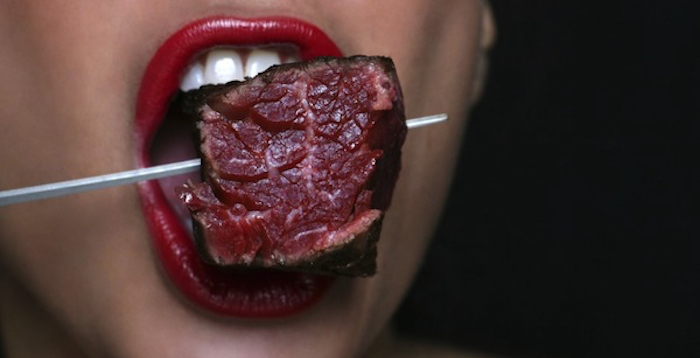The Emotional Evolution of a Romantic Relationship
Table of Contents
“Love is the master key that opens the gates of happiness.”– Dr. Oliver Wendell Holmes
Have you ever heard the expression, “The only thing that remains constant is change?” In my extensive work with all kinds of people in all sorts of relationships, this basic rule has proven true time and time again. I have witnessed countless stages of intimacy, romance,
love and friendship, and have at last been able to group my findings into five areas.
Building on Helen Fisher’s three stages of love, I propose “The Five F.A.C.E.S. of Love.”
F – Fascination
A – Adventure
C – Comfort
E – Energy
S – Success
Let’s take a closer look at each of these phases to see what we can learn from each one and how we can enhance and improve our overall experience.
Fascination
The first stage in a new relationship is based around fascination with each other, the time during which we give off chemical signals that result in that infamous ‘spark’ that lights up all of our senses. Under the spell of fascination, we might be tempted to do things outside our normal behavior because the feelings inspired by a new possible romance are exciting and fun. It’s like putting on a new pair of designer shoes for the first time and you love the way you look. You can’t wait to wear them again and again. Or it’s like test-driving an exotic sports car. Turning on its engine turns you on. You drive around the block a few times and run through the gears to see if it’s a keeper.
We are all familiar with the feelings this fascination can ignite, but what exactly is this spark and where does it come from?
One scientific explanation is pheromones, chemical signals released by humans that send subconscious messages regarding physical attraction. Dr. Ivanka Savic of the Karolinska Institute found that the hormone-like smells “turn on” the brain’s hypothalamus, which is normally not activated by regular odors. This is a very important finding because it identifies the stimulation of a specific area of the brain that is known to modify emotions, hormones, reproduction and sexual behavior. This can trigger curiosity in the brain as it works to comprehend these changes, thereby generating fascination with the person responsible for the internal shift. When we fascinate someone, we attract him or her, and they want to meet us, date us, make love to us and cease to think of anything else. People want to connect with us and when they do, they’re more likely to fall in love with us!
Did you know that 80% of a person’s initial impression of a potential mate is non-verbal? Yes, we can be fascinating without saying a word! The messages sent to others are communicated by posture and facial expression, which are universal. A smile is an open door of approval in any language, whereas crossed arms are a signal of unapproachability. We must identify our fascinating qualities and use them to our advantage in combination with the body language of attraction.
In a relationship, it is important to sustain confidence because even if the love doesn’t fade, the compliments might. We may find ourselves in the position of upholding our own self-worth in the face of withering support in this area (which is something that can be worked on too, as you will see in coming chapters). Focusing on your strengths builds confidence and positive body language, just as focusing on your weaknesses makes you shrink and wither. It’s not rocket-science, but it is scientific.
NEURO-CISE: PERCEPTION, SOLO
Single people need to be aware of their fascinating qualities because it creates a starting point for finding a partner, if that’s the goal. By projecting an attractive image we create options for meeting potential partners. Our unique qualities are our calling card for inviting
fascination. So ask yourself, “How do I want to be perceived by my partner?” For instance, if being health conscious is a strong quality, then time spent at a gym, yoga class, health food restaurant or health expo can create more opportunities for romantic introductions.
There’s nothing more attractive than a confident person who owns their strengths, and you have the tools to project this image – they’re all in your head right now! Sending out the signals of interest amplifies the fascination radar and invites conversation. You can impact others to perceive you through your body language, your facial expressions, the sound and projection of your voice and your actions.
♥ Facial expressions are universal as emotions for happiness, sadness, anger, surprise and fear are the same across all cultures. A genuine smile can be contagious in the most pleasant way.
♥ Body movements, hand gestures and various postures communicate your confidence, insecurity, sexiness, inhibitions, self-love or self-doubt.
♥ Eye contact can communicate curiosity, attraction, surprise, fear, desire and love. It takes three quick glances followed by one three-second gaze to send a signal of flirtation in a public place. MRI scans of the brain have shown that eye contact activates the reward center or ventral striatum, so we are wired to interpret someone gazing into our eyes as satisfying.
♥ When you speak, your voice reflects your psychological and emotional state of mind. Verbal sounds are not just about what you say. It’s also how you speak that impacts people’s perception of you. The tone of your voice can entice or repel someone you wish to attract. You want to produce warm, cheerful, and gracious tones that convey your true personality and sincerity. Be sure to give a compliment followed by an open-ended question like, “That’s a great jacket, where did youget it?”
♥ You can connect subconsciously by subtly copying the actions of the person you are attracted to in order to get into sync with them. So, if they cross their legs, follow suit but don’t be too obvious.
Dr. Antonio Damasio, professor and head of neurology at the University of Iowa has found that the moment of attraction, in fact, mimics a kind of brain damage, where he has found that people with damage to the connection between their limbic structures and the higher brain are smart and rational but unable to make decisions.
“They bring commitment phobia to a whole new level. In attraction, we don’t stop and think, we react, operating on a “gut” feeling, with butterflies, giddiness, sweaty palms and flushed faces brought on by the reactivity of the emotional brain. We suspend intellect at least long enough to propel us to the next step in the mating game-flirtation.”
Amp Your Radar
Here’s another tip for singles: Take along a “flirting prop” such as a book or magazine (something that reveals your unique style or interests) so that people will be motivated to approach you. Or wear a flattering hat, T-shirt with a logo or carry a bag that has an eye-
catching slogan. Borrowing a dog or a baby for a walk around the park is an immediate attention grabber and makes it easy for people to engage in conversation. But remember that the props you choose will affect how others perceive you.
During this introductory fascination phase of a relationship, we play and carefully reveal various parts of our personality, testing the waters, looking for signs that it’s okay to lower our guard enough to move into the next phase.
Adventure
When fascination evolves to the adventure stage, the relationship takes off and we continue to explore new passionate territory. This is the phase where we can’t get enough of each other, and both men and women are releasing the hormones testosterone and estrogen, which play a major role in sex drive. There’s also adrenaline pumping during this time, which results in a sensation most commonly described as “madly in love.” This description is less euphemistic than you think!
Dr. Fisher’s research shows that when we fall head over heels in love, the ventral tegmental
area gets fired up. This is the region that creates the natural stimulant dopamine, producing feelings of energy, craving and obsession. Our heart races and we feel butterflies in our stomach, which ignites desire with a rush of pleasure. The brain’s reaction to a dopamine spike is the same as taking cocaine!
The adventure stage is comparable to a rollercoaster ride. We’re up and down depending on the attention of that other person, sometimes we want to scream, but we also laugh, and we hold on tight.
How To Become 10 Times Bolder
The adventure stage inspires creative thinking. Don’t be afraid to fully explore this stage and push your boundaries. After all, when your relationship moves to the next level, you’ll be glad that you’ve set the tone for a bit of naughtiness. I’ve had clients tell me that their sex lives have become boring, only to discover that, objectively speaking, their sex lives were always boring! It was just the chemicals making them feel excited during the adventure stage. Of course, exploration can happen at any stage, but why not go all out during this heady time?
“Romantic love is not an emotion… It’s a drive. It comes from the motor of the mind,
the wanting part of the mind, the craving part of the mind.”- Dr. Helen Fisher
One way to inspire creative thinking is to ask one question: What would we do if we were ten times bolder to be more adventurous in this relationship? Get a massage together? Read or watch erotica? Take up dancing? Make love in new places? Explore sexual limits
with role-playing?
Ultimately, the best way to be more adventurous is to explore beyond comfort zones, push boundaries and embrace the unfamiliar by welcoming new uncharted territory. Not only will this add incredible new experiences to the adventure of your life but it will also help grow
new brain cells and aid in the transition to the next romantic phase.
Comfort
As the relationship grows into the Comfort stage, many couples misread their feelings as “falling out of love” when, in reality, they are moving into a deeper, habit-forming love.
While the stages of Fascination and Adventure are heavily based in lust, it is here in the Comfort stage that true love begins to take shape. According to Dr. Fisher, the Adventure
phase (“Lust” in her definition) can last anywhere from six months to seven years. So the transition between the Adventure and Comfort phases helps to explain the seven-year itch!
Your partner has now become “family.” As a couple, you have settled into the comfort zone, and the relationship feels like a favorite cozy chair or a pair of warm fuzzy slippers. During this phase, the brain releases oxytocin, also known as the ‘cuddle hormone.’ Oxytocin
generates a feeling of satisfying relaxation, delivering a steady stream of calm that replaces that crazy, electric passion.
A Concordia University study revealed that the portion of the brain that responds to sexual desire (the striatum) also responds to pleasures of food, perhaps explaining that “hungry” feeling we get when we can’t wait to touch our new partner. In contrast, the brain area triggered by feelings of love (the insula) is engaged in attaching value to the things that give us pleasure. This can explain why the sensation of love makes us feel rich.
“Trust and the anticipation of getting needs met is a potent oxytocin producer.” – Dr. John Gray
As safety and relaxation replace spontaneity and lust, many couples feel that the relationship is coming to an end. Break-ups are common during this Comfort phase because often people are unable to redefine their connection to each other, or one partner
has moved on to Comfort while the other remains in Adventure.
I’ve often heard the phrase, “He loves me more than I love him,” or vice versa, and sometimes upon further investigation, the truth is just that he’s still soaring on hormones while his partner has moved on to fuzzy slippers. Difference of opinion over the current stage of a relationship causes strife, which can be smoothed considerably with awareness of the transition phases, and communication about creating passion.
NEURO-CISE: PASSION WHEEL, DUO
A fun and creative way to embrace the Comfort stage without giving up on Adventure is to create a Passion Wheel. On a large piece of paper, draw a circle (perhaps by tracing around the edge of a dinner plate) then use a ruler to divide the circle into 8, 10 or 12 pieces to
create what looks like a pie chart.
Taking turns, each person writes one activity in a section of the pie chart that they believe will enhance the relationship. Continue to take turns until the pie chart is filled in. For example, you could write: talking, cuddling, kissing, caressing, bathing together, feeding
each other, massaging, giving or receiving oral sex, making love in different positions and so on. Then each day, both partners take a turn choosing one activity to do together. This ensures that both partners get their needs met. You can also have fun pointing to an activity while blindfolded! Having your own custom Passion Wheel on display makes you both accountable for putting energy back into the relationship.
One couple I counseled was very surprised at the results from this exercise. The man didn’t know his wife still wanted to make love once a week (they were only having sex once a month), and she had no idea he liked bubble baths. Creating a space and format for
communication about passion is just as important as the passion itself! Of course there was further work to be done to figure out when this couple could actually find the time to make love and take baths, but once the motivation was there, scheduling was much easier.
It’s amazing how often we leave our significant other in the dark about our intimate needs, and then blame them for not being able to read our minds. The security of the Comfort stage gives us a great opportunity to get closer to our mates and reignite the curiosity we’re so busy assuming is gone!
Energy
Those lucky enough to reach the Energy stage are rewarded with a heightened union of intimacy that is known as Synchronized Energy eXchange (S.E.X.!) Having sex with someone that we’re deeply in love with combines rewards from other stages, and also introduces a new hormone called vasopressin (the long-term commitment hormone) that is responsible for regulating territorial markings.
Meanwhile oxytocin is still flowing, which increases empathy and communication, the key to sustaining a relationship long-term. Experiencing true empathy with our partner means actually feeling the other person’s sensations, movements and emotions inside
us. This connection has also been identified scientifically as the
articulation of mirror neurons.
Dr. Rizzolatti is an Italian Neurophysiologist and professor at the University of Parma in Italy who discovered special brain cells called mirror neurons in monkeys, hence the familiar phrase “Monkey see, monkey do.” These mirror neurons work exactly the same way in human beings. They fire upon observation of an action or facial expression by another person, and ‘mirror’ the behavior in our own minds and bodies. For example, if you watch your partner licking an ice cream cone, you feel a ‘virtual’ version of the cool sensation on your tongue as well, or if you bump your head on the car door, your partner is likely to grimace and hold their head, too. Mirror neurons play a powerful role in understanding the depth of people’s connection to each other whether it’s through physical actions, speech, their minds or their intentions.
We can create mirror neurons to enhance intimacy in our relationship when we share emotions of love, happiness and even sadness. To create a deeper connection, share with your partner the things that are meaningful to you, and let them discover the meaning themselves. You can start with something as simple as a piece of chocolate! Let your partner watch as it melts in your mouth and create those mirror neurons that bring you closer. There are also many Tantric techniques that aid in deep intimate bonding, such as synchronized breathing and eye gazing. A deeper sense of commitment allows you to rediscover the sparks that first brought you together and it can feel like falling in love all over again.
Deep bonding energy is not only about reigniting physical urges. One of the most rewarding forms that relationship energy takes is the expression of gratitude. As the years go on, sometimes we forget those little “thank you”s that used to come so easily. We grow accustomed to our lives and fail to see the good in everyday occurrences, or worse, we
fail to learn from things gone wrong.
Research on gratitude is piling up to show that gratefulness brings happiness. In his book, Thanks! How the New Science of Gratitude Can Make You Happier, Robert Emmons PhD points to studies that show practicing gratitude can increase happiness levels by about 25
percent. Not only that but it has several health benefits, including stress reduction, improved immune function, and lower blood pressure. Emotionally, gratitude fosters forgiveness, great self- esteem, generosity and cooperation.
“Being grateful not only perks up your mood, but it positively impacts every aspect of life.”
– Robert Emmons PhD.
NEURO-CISE: PERSPECTIVE, SOLO
Here is a great gratitude exercise by Marelisa Fabrega, author of Daring to Live Fully that can help put focus on all the positive things in life and make sure that the proverbial glass stays half full.
Obviously, things won’t always go your way. However, gratitude isn’t an emotion that is reserved for those moments when you get what you want. When things go wrong you can use the power of gratitude to release some of the negative emotions that you may be feeling due to the failure or setback that you just experienced.
After a negative event, put things in perspective by remembering that every difficulty carries within it the seeds of an equal or greater benefit.
When faced with adversity, ask yourself the following questions:
♥ “What’s good about this?”
♥ “What can I learn from this?”
♥ “How can I benefit from this?”
♥ “Is there something about this situation that I can be grateful for?”
Gratitude Journal
Starting a Gratitude Journal is a great way to acknowledge and appreciate all of the positive things in your life and to focus on what you have, as opposed to what you do not have. When you acknowledge gratitude, the law of attraction will bring you more of what you focus on. According to Dr. John Gottman, a leader on the subject of marriage, “Gratitude is the single biggest contributor to a flourishing marriage.” It stands to reason that what works in the most complicated of human relationships works well in all relationships.
Buy a journal and take a moment each day to list at least five things for which you are grateful. For example: your health, the food on the table, the sun shining, your job, friends, family, pets and so on. Your daily gratitude will rub off on other people too, which will attract more potential partners, or take your relationship to the next level.
Gratitude Love Letter
Surprise your partner with a love letter. Put into writing how grateful you are for the gifts your partner has brought into your life. As more time goes into a relationship and the level of peace and comfort deepens, love can feel like second nature, so the magic of the connection can be taken for granted. By no fault of our own, we often most easily forget to acknowledge and compliment the person who has stood by us longer than any other.
Success
If love is the grand prize of life, then we can define Success by our level of satisfaction and happiness. Just the right levels of the mood enhancing chemical Serotonin (known as the feel-good neurotransmitter) are produced in the midbrain and brain stem, resulting in a profound sense of wellbeing, which is the goal of the Success stage.
When thinking about what it means to define a relationship as a success, I suddenly had this image of sitting by a campfire, making S’mores (for you readers who haven’t been introduced to this delightful treat, a “S’more” is made of a marshmallow and a square
of chocolate sandwiched between two graham crackers).
On our way to the campfire, our fancy shoes have been replaced by comfortable boots that were made to support a long hike. The sports car is now an SUV built to carry all the pieces of our life. The adventure has been the journey we have taken together to this campsite. The chocolate of addictive passion has become a comfort food. And we’re wrapped up under the stars with the one that makes us feel safe and at home, no matter where we are.
It’s important to note that you can have a successful relationship without realizing it. For instance, one of my clients came to see me because she was dealing with long-standing conflicts with her family.
Her boyfriend, who was very supportive and loving towards her, would always accompany her and occasionally we would involve him in an exercise. One day while running through the list of things she would change about her family, I asked her what she would change
about her romantic relationship and she realized that she wouldn’t change a thing! She was putting so much attention on her family strife that she was completely oblivious to the fact that her romantic relationship was an incredible success, filled with love, friendship, trust, passion and respect.
This revelation helped her put the focus on something positive which consequently gave her the ability to find closure with her family.
For a relationship to maintain its success, its partners have to grow together mentally, physically, emotionally and sexually. I think one of the key elements to accomplishing this is to continuously fall in love with our partner again, and one of the best ways to do this is to never give up the fun of flirting.
NEURO-CISE: FLIRTING, DUO
It may seem that flirtation ends once a relationship begins, but ideally it never ends. It is always important to remind your partner that they are attractive, smart, sexy and desired. Incorporating romantic reminders such as sweet notes, seductive poems, charming emails or thoughtful voice messages are great ways of flirting to keep a relationship new and exciting.
“As you fulfill emotions, your brain will change and form new patterns, which is the whole goal.”– Dr. Deepak Chopra
There are many ways you can keep the flirtation alive:
♥ Leave love notes for your partner to find in his or her pocket, in their car, in the bathroom or imaginative place where they will least expect to find it.
♥ Record messages of love and appreciation in your most stimulating voice and put it in their car for them to discover on their way to work.
♥ Send compliments via texts to let your partner know that you are thinking of him or her.
♥ Plan a date night where you agree to meet in public as if you are strangers and flirt as if you’re meeting for the first time.
♥ Make a flirty verbal request to meet at the foot of the bed and when you do, tell your partner what makes him or her most lovable to you.
Love is not a static emotion. It ebbs and flows, grows and changes as it evolves over time. There will be days when it feels like it is overflowing and there will be days when it will seem like it is dispersing. And as days become months and months become years, how the relationship defines love will change. The spark will become a flame. The flame will become a fire. The fire will warm the heart. And if both hearts are open, there’s no end to the number of sparks it will find to keep the home warm.
NEURO-CISE: MISSION STATEMENT, DUO
As couples work through the various F.A.C.E.S. of Love, it can become challenging to remain focused on shared goals. Sometimes it can even be hard to remember what those goals are! One way to stay on track is to create a Couple’s Mission Statement. Many successful businesses use a mission statement to keep the company focused on goals and ideals.
It acts as a reminder of positive changes, growth, or advancements within the organization. If it works for big business, why shouldn’t successful relationships be able to apply the same technique?
Collaborate to create a clear vision of shared principles and goals that can guide, encourage and strengthen the foundation of your union. If you’re married, use your vows as a starting point. Why did you choose to say those things and what do they say about your long-term goals as partners?
If you’re not married but in a committed relationship, what key statements might be used to represent the shared goals for your commitment? If you’re gay and in a state or country that doesn’t yet legally recognize your relationship, this is also a great exercise for formalizing your commitment.
And if you’re single, what might such a mission statement say about the kind of partner you are looking for?
The Couple’s Mission Statement might include:
♥ To love each other
♥ To help each other
♥ To believe in each other
♥ To wisely use our time together
♥ To be each other’s best friend
♥ To respect each other
♥ To trust each other
♥ To support each other
♥ To be in love forever
♥ To be committed to understanding and forgiveness
♥ To remain loyal and encouraging without judgment
♥ To create a partnership that will grow mentally, physically, sexually and spiritually until the end of time































